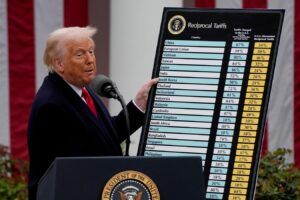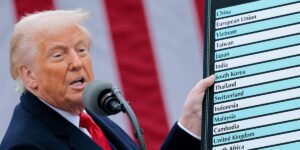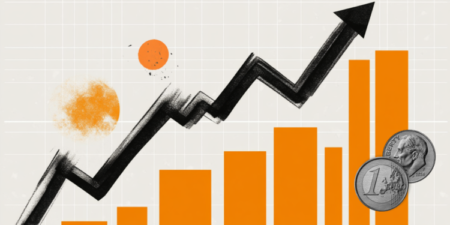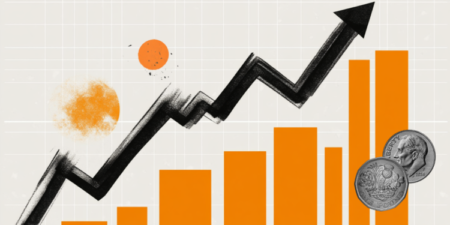- The Greenback remains stable against most major peers on Wednesday.
- US President Trump is set to announce reciprocal tariffs on Wednesday.
- The US Dollar Index trades stable around 104.10, while looking for any sort of driver.
The US Dollar Index (DXY), which tracks the performance of the US Dollar (USD) against six major currencies, consolidates and hovers near 104.00 at the time of writing on Wednesday. The Greenback remains sidelined just hours before United States (US) President Donald Trump announces the reciprocal tariff implementation at the White House at 20:00 GMT. The White House and the Trump administration are very sketchy in details, and until now, it remains unclear what the tariffs will mean for markets.
On the economic data releases, this Wednesday’s main event was the Automatic Data Processing (ADP) private sector employment data. As per usual in the Nonfarm Payrolls (NFP) week, the ADP number precedes the official NFP number from the Bureau of Labor Statistics (BLS). Although there is no real correlation between the NFP and the ADP numbers for the private sector, this Wednesday’s upbeat numer sets the tone for expectations for Friday.
Daily digest market movers: ADP above expectations
- The ADP Employment Change data for March jumped to 155,000, beating the 105,000 expectation in new employment compared to 77,000 in February.
- At 14:00 GMT, the February Factory Orders data will be released. Expectations are for a softer increase of 0.5% compared to the previous 1.7% seen in January.
- At 20:00 GMT, the main event for this Wednesday, US President Donald Trump will announce wide-ranging tariffs in an event he named “Liberation Day.” The moves could significantly affect global trade and financial assets.
- Equities turn blood red ahead of the US trading session. Both European and US equity incides are all down over 1% on the day.
- According to the CME Fedwatch Tool, the probability of interest rates remaining at the current range of 4.25%-4.50% in May’s meeting is 85.5%. For June’s meeting, the odds for borrowing costs being lower stand at 74.4%.
- The US 10-year yield trades around 4.13%, a fresh monthly low as bonds are bid as safe haven resort.
US Dollar Index Technical Analysis: That could hurt
The US Dollar Index (DXY) could see again no big moves or changes even after Trump’s announcement of “Liberation Day”. Traders are still left in the dark about the impact of all these levies and tariffs on the US and the global economy. While a local US recession would see a substantially lower US Dollar, a global slowdown would benefit and strengthen the Greenback as a safe haven asset.
In that case, a return to the 105.00 round level could still occur in the coming days, with the 200-day Simple Moving Average (SMA) roughly converging at that point and reinforcing this area as a strong resistance at 104.93. Once broken through that zone, a string of pivotal levels, such as 105.53 and 105.89, could limit the upward momentum.
On the downside, the 104.00 round level is the first nearby support, although it looks bleak after being tested since Friday. If that level does not hold, the DXY risks falling back into that March range between 104.00 and 103.00. Once the lower end at 103.00 gives way, watch out for 101.90 on the downside.
US Dollar Index: Daily Chart
US Dollar FAQs
The US Dollar (USD) is the official currency of the United States of America, and the ‘de facto’ currency of a significant number of other countries where it is found in circulation alongside local notes. It is the most heavily traded currency in the world, accounting for over 88% of all global foreign exchange turnover, or an average of $6.6 trillion in transactions per day, according to data from 2022. Following the second world war, the USD took over from the British Pound as the world’s reserve currency. For most of its history, the US Dollar was backed by Gold, until the Bretton Woods Agreement in 1971 when the Gold Standard went away.
The most important single factor impacting on the value of the US Dollar is monetary policy, which is shaped by the Federal Reserve (Fed). The Fed has two mandates: to achieve price stability (control inflation) and foster full employment. Its primary tool to achieve these two goals is by adjusting interest rates. When prices are rising too quickly and inflation is above the Fed’s 2% target, the Fed will raise rates, which helps the USD value. When inflation falls below 2% or the Unemployment Rate is too high, the Fed may lower interest rates, which weighs on the Greenback.
In extreme situations, the Federal Reserve can also print more Dollars and enact quantitative easing (QE). QE is the process by which the Fed substantially increases the flow of credit in a stuck financial system. It is a non-standard policy measure used when credit has dried up because banks will not lend to each other (out of the fear of counterparty default). It is a last resort when simply lowering interest rates is unlikely to achieve the necessary result. It was the Fed’s weapon of choice to combat the credit crunch that occurred during the Great Financial Crisis in 2008. It involves the Fed printing more Dollars and using them to buy US government bonds predominantly from financial institutions. QE usually leads to a weaker US Dollar.
Quantitative tightening (QT) is the reverse process whereby the Federal Reserve stops buying bonds from financial institutions and does not reinvest the principal from the bonds it holds maturing in new purchases. It is usually positive for the US Dollar.
Read the full article here
















